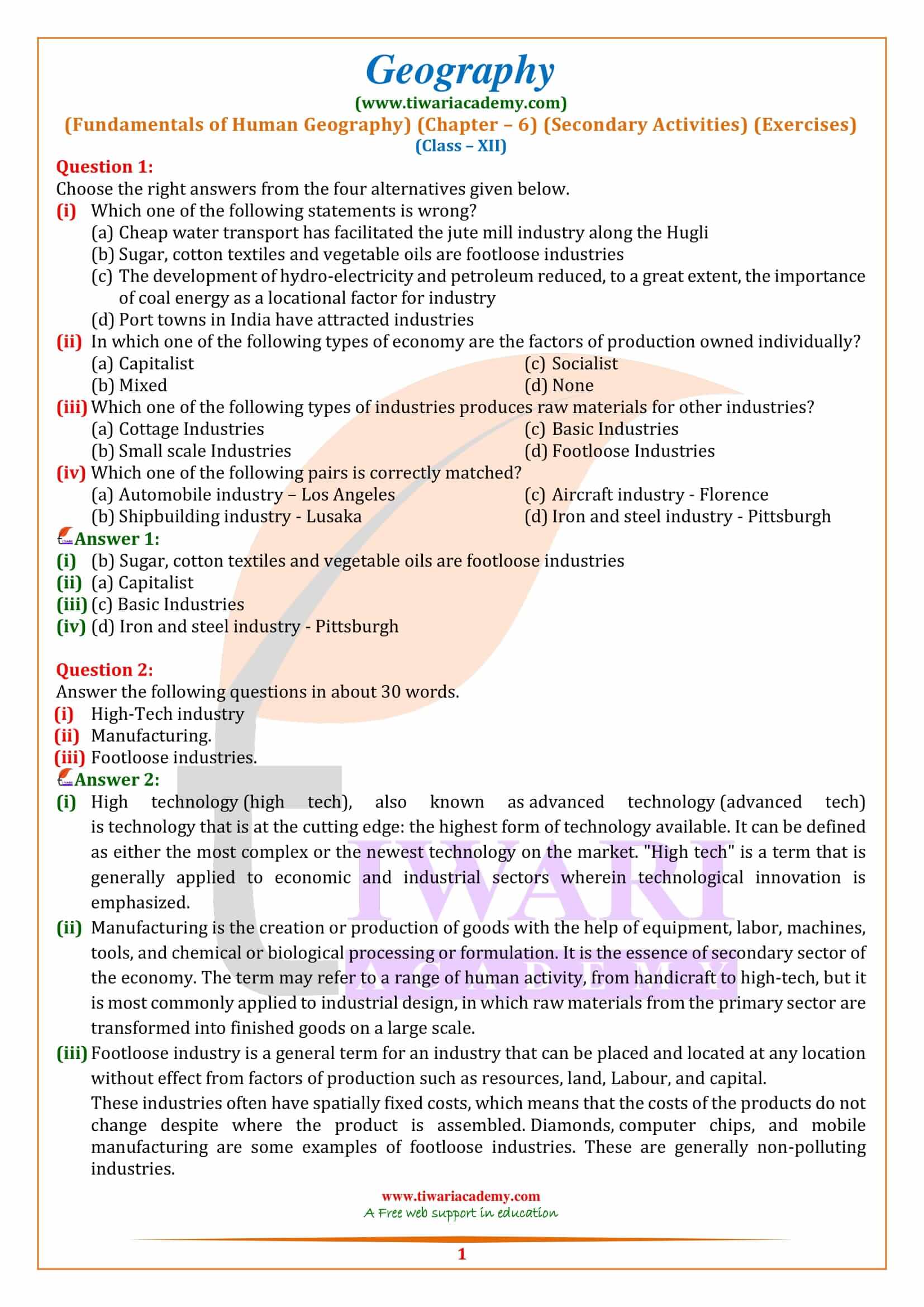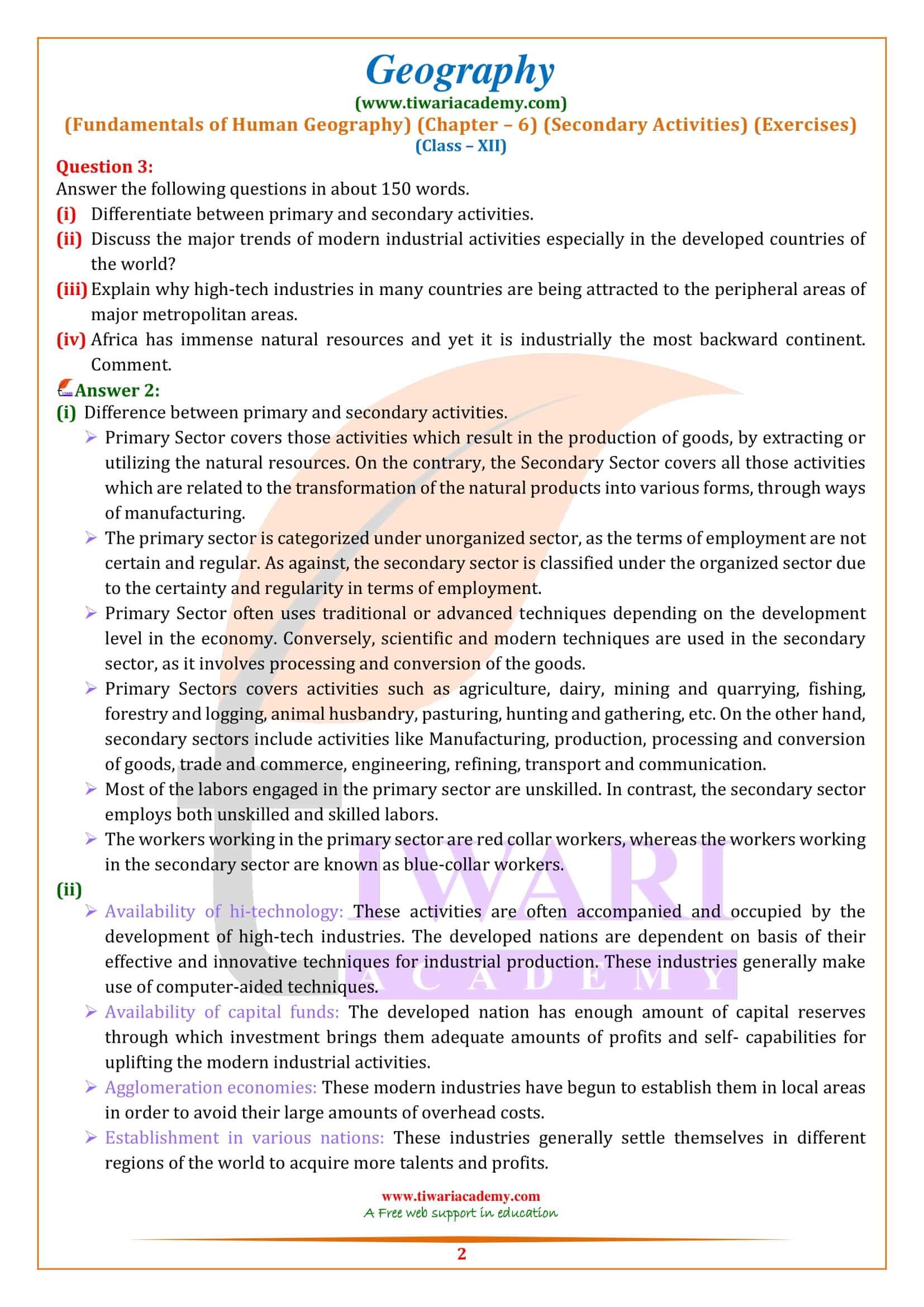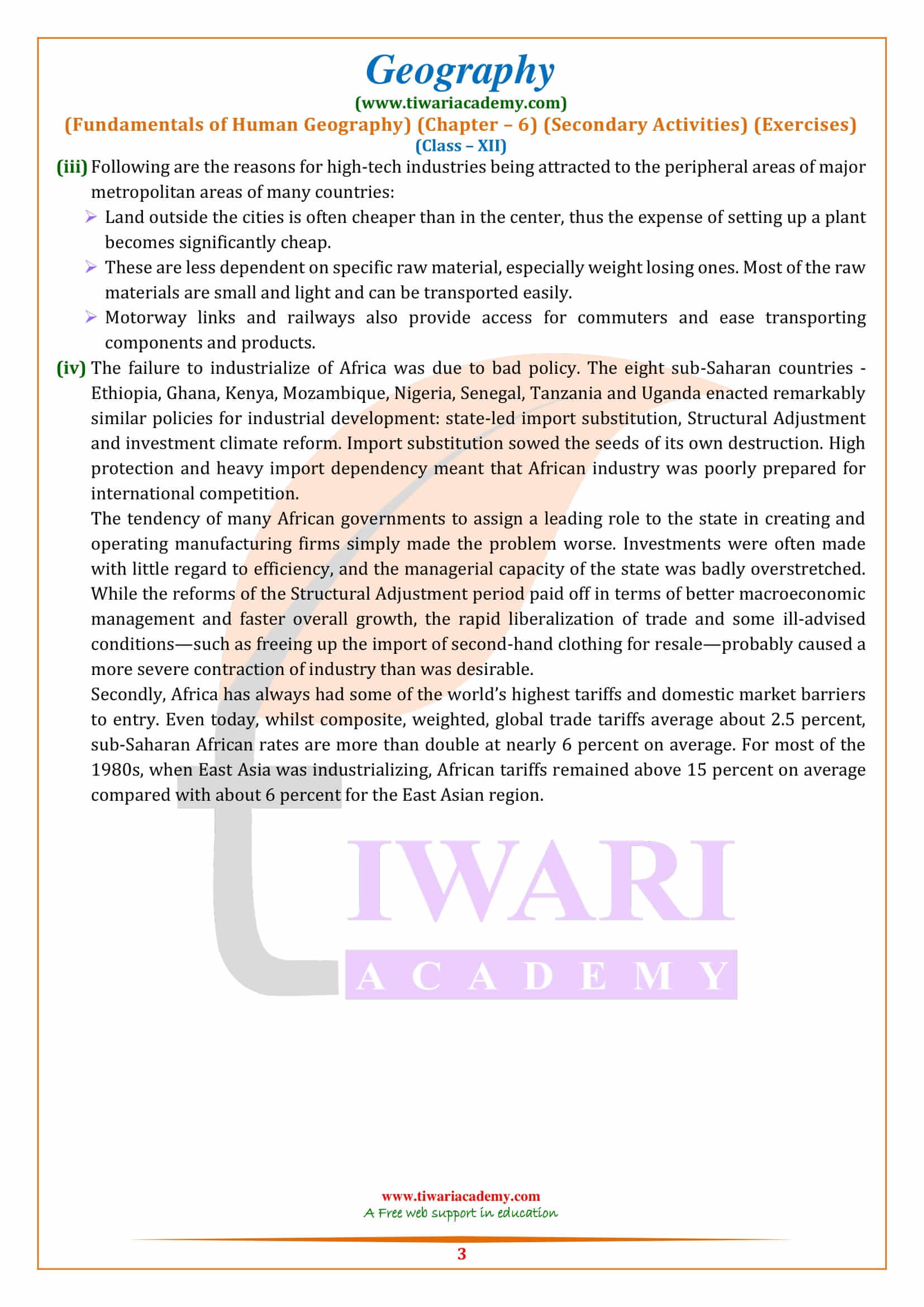NCERT Solutions for Class 12 Geography Chapter 6 Secondary Activities in Hindi and English Medium from Fundamentals of Human Geography for session 2025-26. Students of class 12 can take help in unit 3 chapter 6 using question answers, MCQ and important questions for board exams.
NCERT Solutions for Class 12 Geography Chapter 6
Class 12 Geography Chapter 6 Secondary Activities Question Answers
What do you understand by High-Tech industry?
High technology (high tech), also known as advanced technology (advanced tech) is technology that is at the cutting edge: the highest form of technology available. It can be defined as either the most complex or the newest technology on the market. “High tech” is a term that is generally applied to economic and industrial sectors wherein technological innovation is emphasized.
Class 12 Geography Chapter 6 MCQ
Which one of the following statements is wrong?
In which one of the following types of economy are the factors of production owned individually?
Which one of the following types of industries produces raw materials for other industries?
Which one of the following pairs is correctly matched?
What is Manufacturing?
Manufacturing is the creation or production of goods with the help of equipment, labor, machines, tools, and chemical or biological processing or formulation. It is the essence of secondary sector of the economy. The term may refer to a range of human activity, from handicraft to high-tech, but it is most commonly applied to industrial design, in which raw materials from the primary sector are transformed into finished goods on a large scale.
Differentiate between primary and secondary activities.
Difference between primary and secondary activities.
- Primary Sector covers those activities which result in the production of goods, by extracting or utilizing the natural resources. On the contrary, the Secondary Sector covers all those activities which are related to the transformation of the natural products into various forms, through ways of manufacturing.
- The primary sector is categorized under unorganized sector, as the terms of employment are not certain and regular. As against, the secondary sector is classified under the organized sector due to the certainty and regularity in terms of employment.
- Primary Sector often uses traditional or advanced techniques depending on the development level in the economy. Conversely, scientific and modern techniques are used in the secondary sector, as it involves processing and conversion of the goods.
- Primary Sectors covers activities such as agriculture, dairy, mining and quarrying, fishing, forestry and logging, animal husbandry, pasturing, hunting and gathering, etc. On the other hand, secondary sectors include activities like Manufacturing, production, processing and conversion of goods, trade and commerce, engineering, refining, transport and communication.
- Most of the labors engaged in the primary sector are unskilled. In contrast, the secondary sector employs both unskilled and skilled labors.
- The workers working in the primary sector are red collar workers, whereas the workers working in the secondary sector are known as blue-collar workers.
What is Footloose industries?
Footloose industry is a general term for an industry that can be placed and located at any location without effect from factors of production such as resources, land, Labour, and capital.
These industries often have spatially fixed costs, which means that the costs of the products do not change despite where the product is assembled. Diamonds, computer chips, and mobile manufacturing are some examples of footloose industries. These are generally non-polluting industries.
Discuss the major trends of modern industrial activities especially in the developed countries of the world?
Availability of hi-technology: These activities are often accompanied and occupied by the development of high-tech industries. The developed nations are dependent on basis of their effective and innovative techniques for industrial production. These industries generally make use of computer-aided techniques.
Availability of capital funds: The developed nation has enough amount of capital reserves through which investment brings them adequate amounts of profits and self- capabilities for uplifting the modern industrial activities.
Agglomeration economies: These modern industries have begun to establish them in local areas in order to avoid their large amounts of overhead costs.
Establishment in various nations: These industries generally settle themselves in different regions of the world to acquire more talents and profits.




